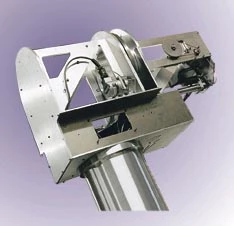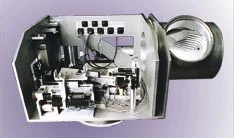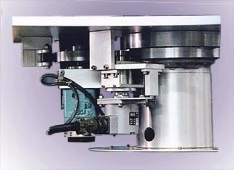Custom Lidar Scanners
Description
DFM Engineering has provided many Electro-Optical-Mechanical (EMOS™) scanner systems used for Light Detection And Ranging (LIDAR) remote sensing applications. Typically these scanners are an Alt-Az Coude' form of a beam director using two flat mirrors. The major difference between a LIDAR scanner and a beam director is the scanner has a lower angular resolution and a higher speed. The optics may be of lower optical figure because of the longer wavelengths often used. The scanners may also incorporate additional electro-optical-mechanical components such as collimating optics, zoom lenses, focus motion, fiber feed, etc. DFM Engineering has designed and manufactured over 30 systems incorporating these features that were used to measure the atmospheric turbulence. Three were near a helicopter landing ship where stabilization of the scanner to correct for a ship's roll, pith, and yaw has also been provided.
Custom Lidar Scanners
Specifications |
|
|---|---|
| Laser Wavelength: | -- nm |
| Scanning Angle: | 120 deg |
| Scanning Frequency Range: | 1-10Hz |
| Angular Resolution: | 60 deg |
| Measurement Range: | 1-10m |
| Distance Resolution: | -- mm |
For pricing, technical or any other questions please contact the supplier
- No registration required
- No markups, no fees
- Direct contact with supplier
-
Ships from:
United States
-
Sold by:
-
On FindLight:
External Vendor

Claim DFM Engineering Inc Page to edit and add data
Frequently Asked Questions
A Lidar scanner is an Electro-Optical-Mechanical (EMOS™) system used for Light Detection And Ranging (LIDAR) remote sensing applications. It is a beam director that uses two flat mirrors and has a lower angular resolution and higher speed compared to a beam director.
The major differences between a Lidar scanner and a beam director are the lower angular resolution and higher speed of the scanner. Additionally, the optics of a Lidar scanner may have a lower optical figure due to the longer wavelengths often used.
A Lidar scanner may incorporate additional electro-optical-mechanical components such as collimating optics, zoom lenses, focus motion, fiber feed, etc.
DFM Engineering has designed and manufactured over 30 systems incorporating these features that were used to measure atmospheric turbulence. Three of these systems were near a helicopter landing ship and included stabilization to correct for the ship's roll, pitch, and yaw.
You can find more information about the specifications and features of the Custom Lidar Scanners on the DFM Engineering website under the "Custom Lidar Scanners" section.



